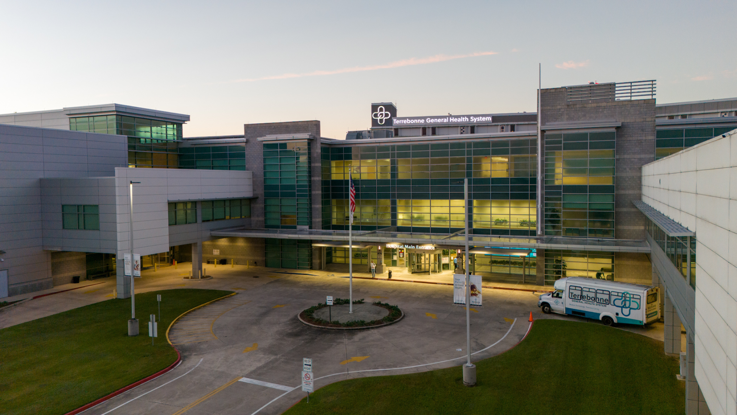Every Second Counts: Insights from a Neurologist on Strokes
- Category: Must-reads
- Posted On:
- Written By: Dr. Tyler Simons, Neurologist

Every second counts when it comes to strokes. They’re sudden, sometimes subtle, and often misunderstood. In this article, Dr. Tyler Simons, a Neurologist at Terrebonne General Neurology Care, explains what strokes are, how to spot them, and what steps you can take to prevent them or respond effectively.
- Can you tell me how you first explain a stroke to someone who’s never heard of it?
A stroke is a medical emergency caused by the interruption of normal blood flow to the brain. This can occur when a blood vessel ruptures, and blood leaks into the surrounding brain tissue in a hemorrhagic stroke, or when a blood clot within the vessel blocks normal blood flow in an ischemic stroke. Ischemic strokes are much more common, making up around 85% of all strokes.
- When you see a patient for the first time, what often surprises them about who is at risk?
Most people think of stroke as a condition of the elderly, but it is becoming more common in patients in their 30s and 40s. The damage our blood vessels accumulate from poorly controlled high blood pressure, elevated cholesterol, and tobacco use does not respect age.
- If you could give people one key piece of advice to prevent a stroke, what would it be?
The key to preventing a stroke is making healthy lifestyle choices daily, including being vigilant about underlying medical conditions.
- Are there everyday habits, like diet, exercise, or sleep, that make a bigger difference than people realize?
Healthy habits to decrease stroke risk include regular aerobic exercise (walking, jogging, swimming, riding a bicycle) a few days per week, eating more vegetables and lean meats rather than processed food and red meats, avoiding toxic exposures such as tobacco use, and consistently checking in with your primary care doctor.
- Could you share a story about a patient who caught a stroke early because they recognized the signs?
A 60-year-old patient of mine was living independently with only minimal help from family. Every morning, her daughter called her to check in. One day, while speaking to her mother on the phone, she noticed her slurring her words and responding nonsensically. She called 911, and EMS arrived, the patient had right-sided weakness and was taken to the Emergency Room for an acute stroke. As these symptoms were noted early, she got to the hospital shortly after symptoms began and was a candidate for acute treatment.
- What are the subtle symptoms that people often ignore but shouldn’t?
Stroke symptoms can be subtle, so the American Stroke Association created the mnemonic “BE FAST” to help recognize the signs:
- B- Balance; feeling off balance or issues walking
- E- Eyes; loss of vision or double vision
- F- Face; drooping of one side of the face or food/liquid falling from a corner of your mouth
- A- Arm; Weakness in either your arms or legs, typically involving one side
- S- Speech; Slurred speech, nonsensical speech, or issues understanding what other people are saying
- T- Time; Time is brain! Call 911 for immediate evaluation
- Walk us through what happens when someone arrives at the hospital with a stroke.
When someone arrives at the hospital with a possible stroke, a code stroke is activated, alerting multiple teams to evaluate the patient quickly. The patient’s vital signs and basic blood work are collected, followed by an immediate evaluation by a neurologist trained in the diagnosis and management of stroke. After the initial assessment, brain imaging checks for hemorrhage or loss of blood flow and assesses blood vessel health. If eligible for acute intervention, the patient may receive clot-busting medication or undergo a procedure to remove the clot physically.
- Are there treatments or approaches that people might not know exist?
In the last 20 years, stroke treatment has been revolutionized. Patients now receive clot-busting medication like Tenecteplase, which is more specific and effective. Also, we can now physically remove the clot through a procedure called mechanical thrombectomy up to 24 hours from the time the patient was last seen normal. In the case of hemorrhagic strokes, there are more minimally invasive surgical options to evacuate the blood that were not previously available.
- Can you describe what recovery looks like from the patient’s perspective?
After initial treatment, the patient is evaluated and treated by physical, occupational, and speech therapists. The patient undergoes specific exercises and assessments that promote recovery, followed by intensive therapy or outpatient therapies.
- Do you have a story of a patient whose recovery surprised you or inspired you in some way?
The previously mentioned 60-year-old patient got to the hospital within 3 hours of stroke symptom onset. A large blood clot was blocking blood flow to most of the left side of her brain. She received Tenecteplase and underwent a successful mechanical thrombectomy. She spent 2 days in the hospital for diagnostic testing, but walked out of the hospital with only mild right face and arm weakness.
Being prepared and informed can save lives. By recognizing the signs, managing risks, and seeking care quickly, patients and families can improve outcomes and support recovery. Dr. Simons emphasizes: knowledge and action are your best tools against stroke.



